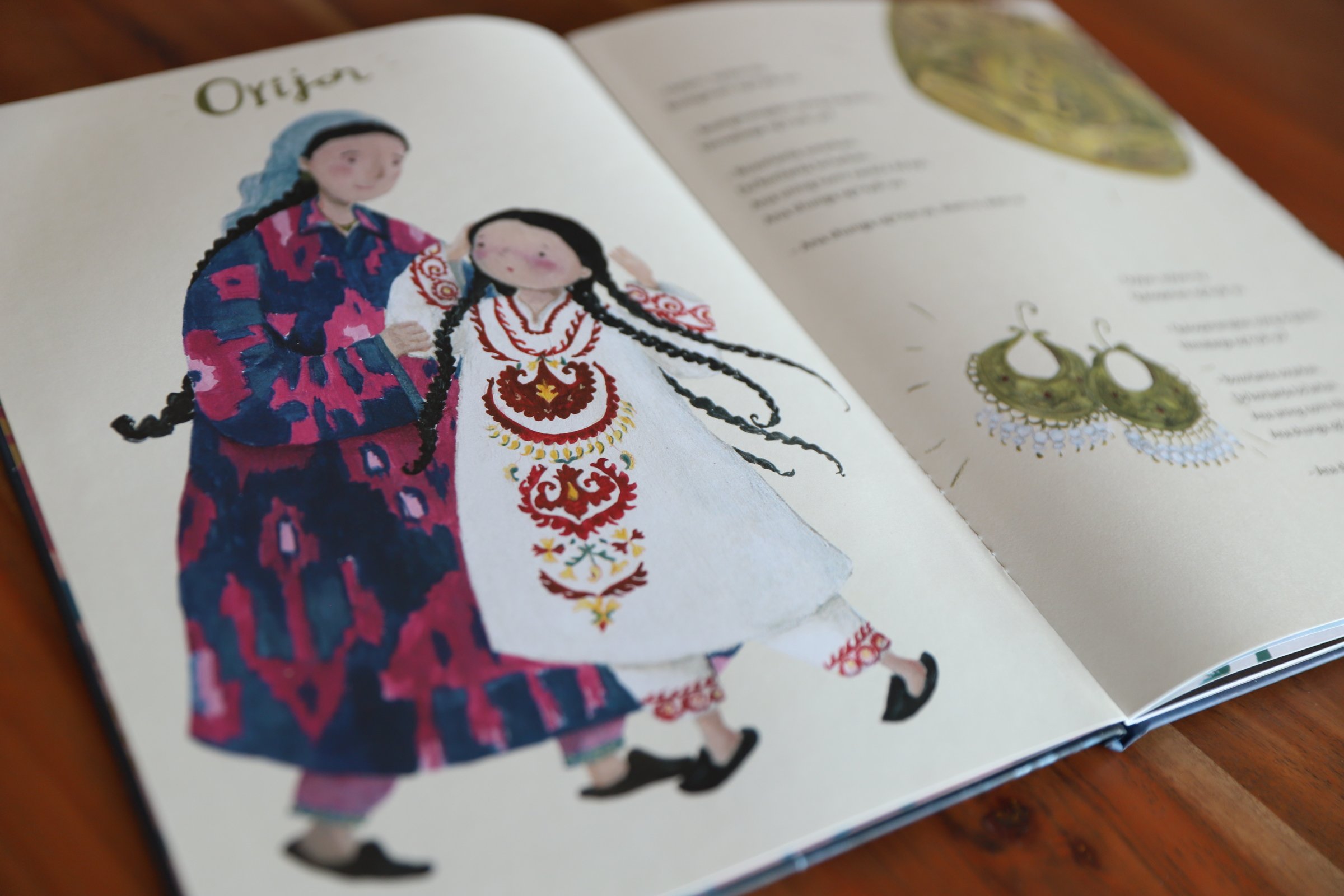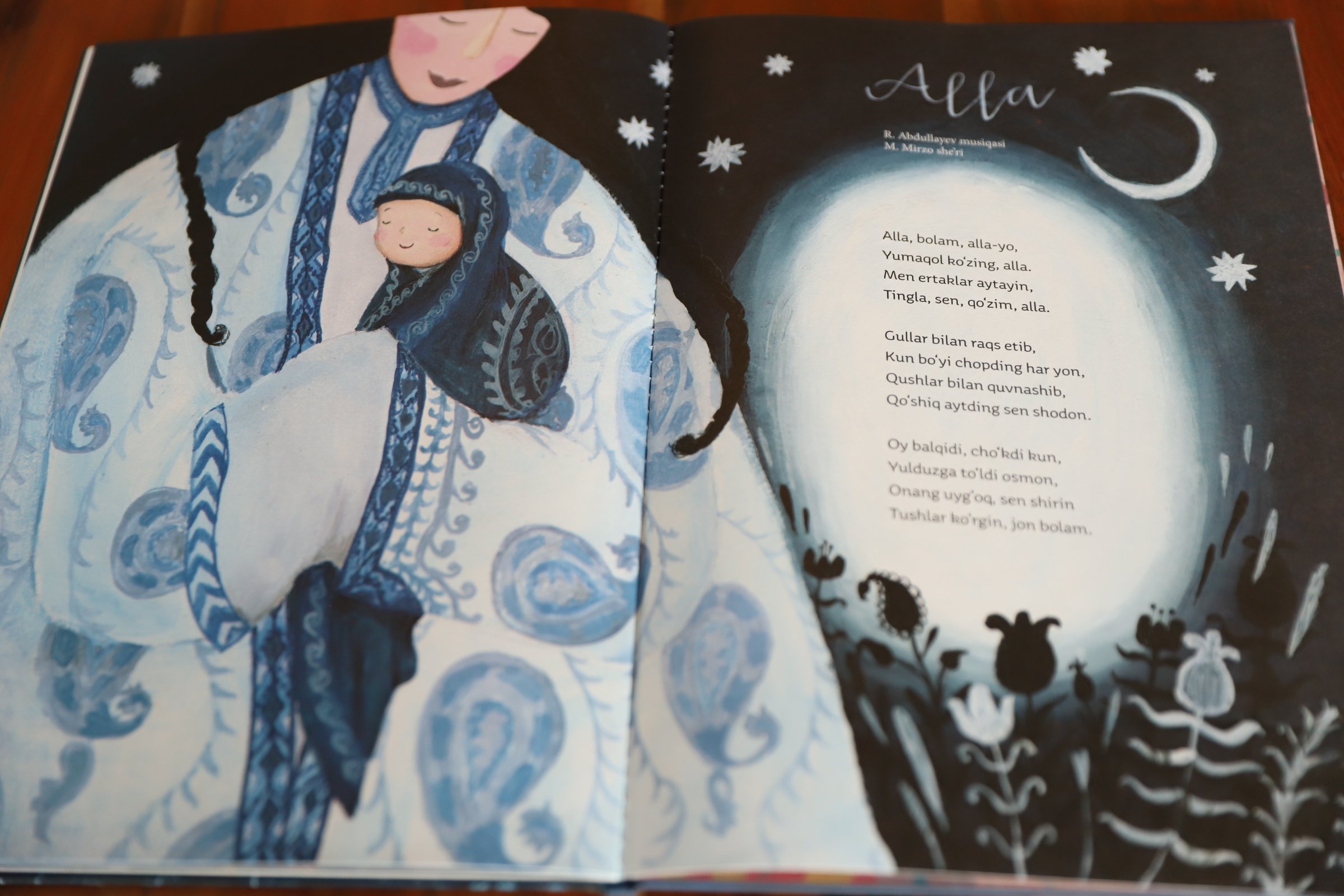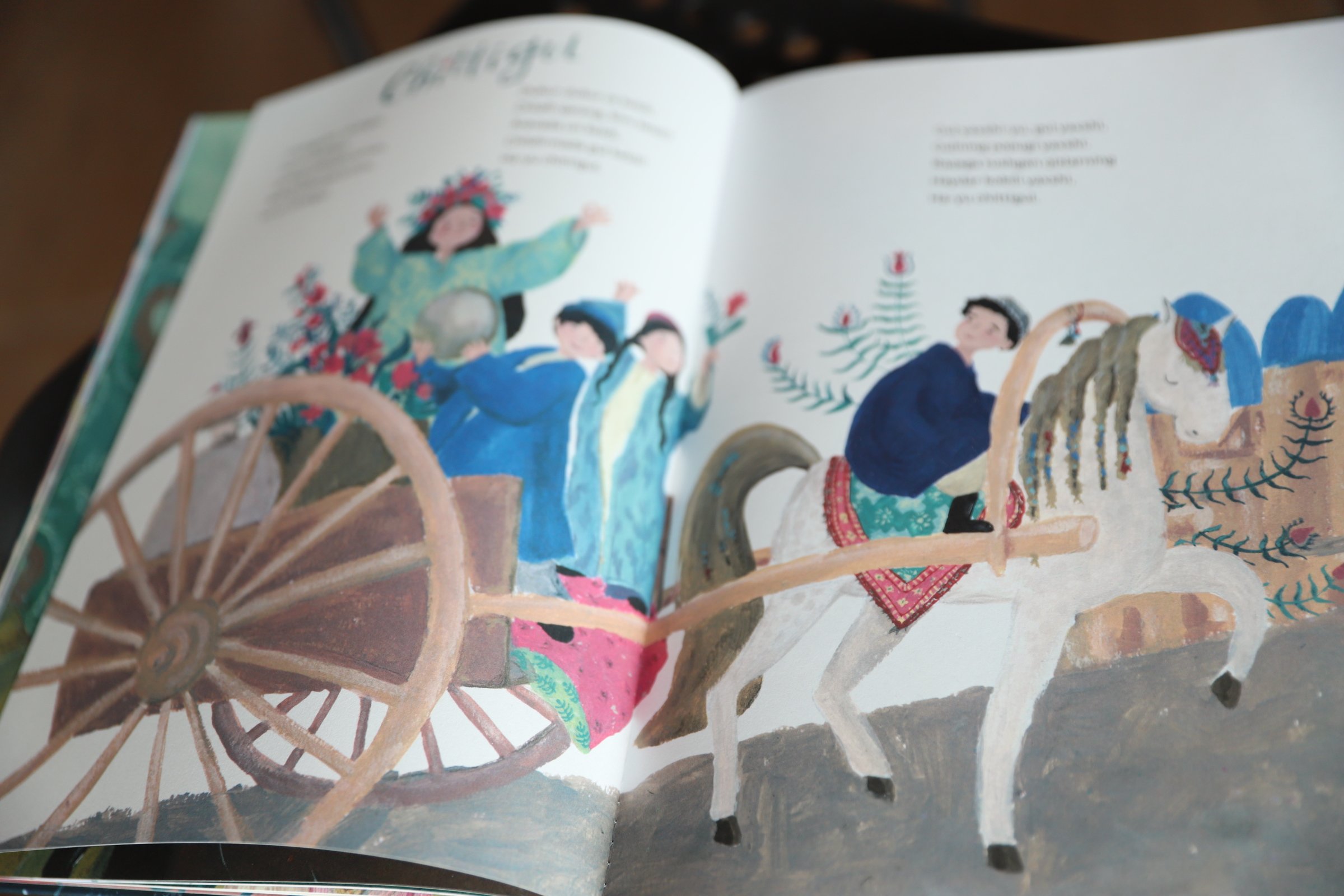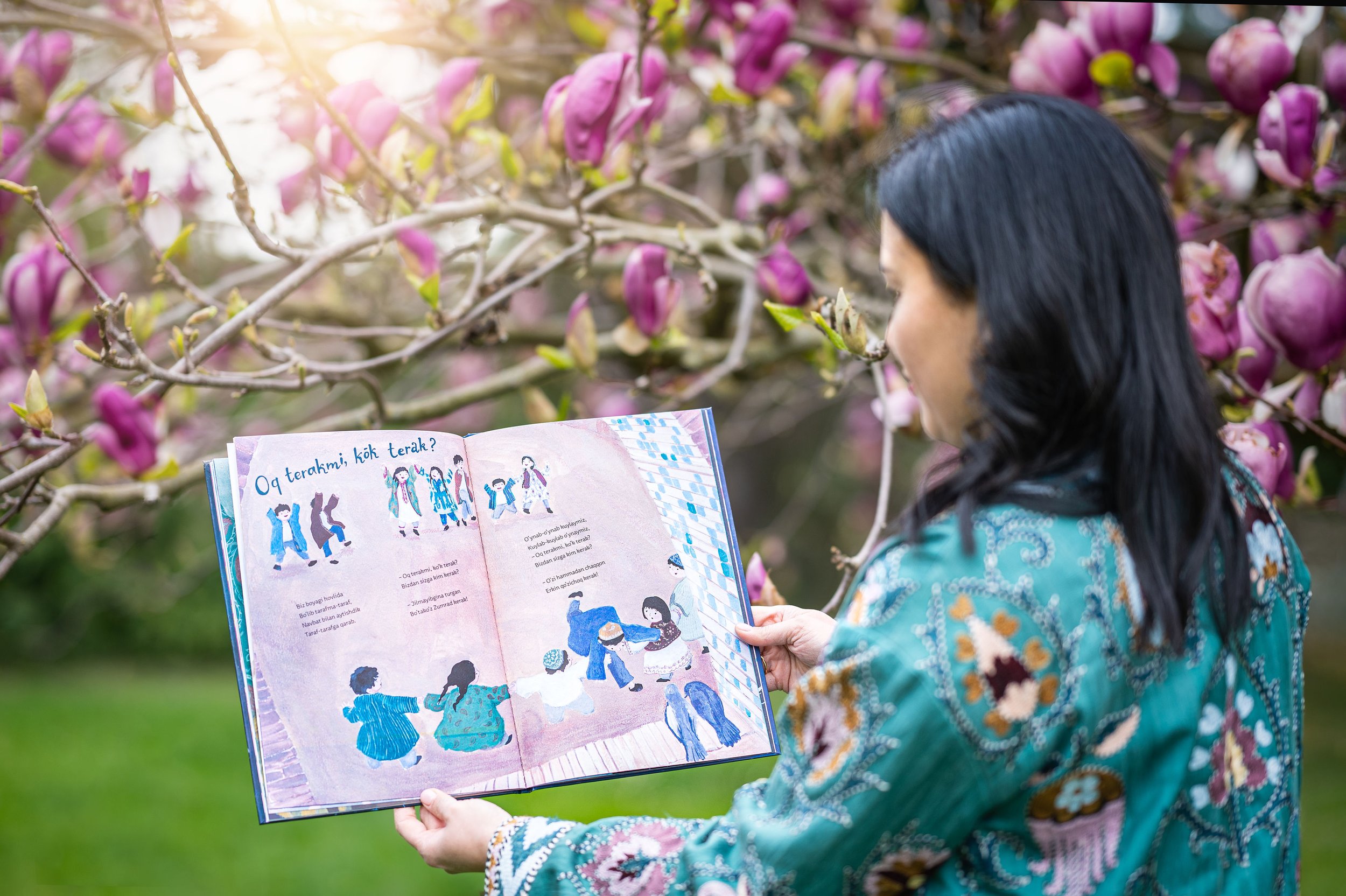Dive into Childhood: Nargis Karimova's Book
The book "Oq terakmi, ko'k terak "* is the first children's book in Uzbekistan with content in Uzbek, musical accompaniment and colorful illustrations on each spread. Fatima Abdieva explains the features of the illustration book and shares an interview with Nargis Karimova, the author of this book.
Nargis Karimova's illustration book reveals the innermost things of childhood, and an adult no longer notices how eyes are filled with tears with memories of childhood, and the heart with light sadness for the carefree days. The book "Oq terakmi, ko'k terak" is an opportunity to give children a piece of their past: images, pictures, memories and songs.
In the book readers will find samples of traditional songs for children of Uzbekistan, which are handed down from generation to generation and are familiar to inhabitants of Uzbekistan since childhood. Also in the book are spring traditional songs: Yomgir yogalok (rain), Boychechak (snowdrop), the recitative song Chittigul (from "chikdi gul" - flower came out), as well as everyone's favorite song of Yalla group - Sumalak (a traditional dish that is prepared on the Navruz holiday). Besides songs, there is a game in the book, favorite among boys "kim oladi yo", where standing in a circle the boys throw a skullcap or a scarf on the ground, and one of them is challenged to retrieve this object with his mouth, without hands and without bending knees.
And, of course, a funny game called "Oq terakmi, ko'k terak", which brings boys and girls of all ages together, where there are no losers, but a sea of smiles and fun. The book closes with a lullaby written by the composer Rustam Abdullayev, which is what Nargis sang to her children. Modern arrangements were created for all the songs and new versions performed by children were recorded. Readers will be able to view illustrations, read and sing along with the audio tracks by scanning the QR code at the end of the book.
According to Nargis, the idea of creating the book "Oq terakmi, ko'k terak" and the desire to engage in children's illustration are interrelated. It was through the idea of creating this book that Nargis began to study children's illustration in greater depth.



- Where did the idea for the book "Oq terakmi, ko'k terak" come from?
My main motivation was my children. My children loved music books with CDs and my daughters enjoyed singing songs while looking at the pictures. I remember then that I really wanted them to listen and sing our Uzbek folk songs with the same fervor. I began to look for such books on the Uzbek book market, but all I found were either textbooks on Uzbek literature or thick black and white books with folklore songs. I had a desire to create a beautiful, colorful book of this format, which would be interesting to hold even a small child. With this idea in mind, I enrolled in a French online school for a course in children's illustration.
- What or who inspired you to pursue your dreams?
In 2021, the first book in French that I illustrated was published, in collaboration with the children's writer Sophie Moronval. It was a kind of "test of my pen" before starting to realize my long-standing plan to create an Uzbek music book. Also a huge boost to my dream was a visit to Elina Ellis' illustration camp. In the fall of 2021, at this very camp in Cyprus, under the keen eye of illustrator Elina Ellis, the first drafts for the book "Oq terakmi, ko'k terak" were born.
- What is the name of your book related to?
The game "Oq terakmi, ko'k terak" is associated with my childhood, it is always warm and cozy from these memories, and playing in chains is one of such dear memories, so the decision to name the book like that came by itself, there were no torments and doubts.
I hope that the book will allow modern children to learn and love our children's songs, to be proud of their roots. I am sure that it causes nostalgia in the hearts of parents, like a chest in the attic of a grandmother, from which you take out little things dear to your heart, soaked with pleasant memories from childhood.



